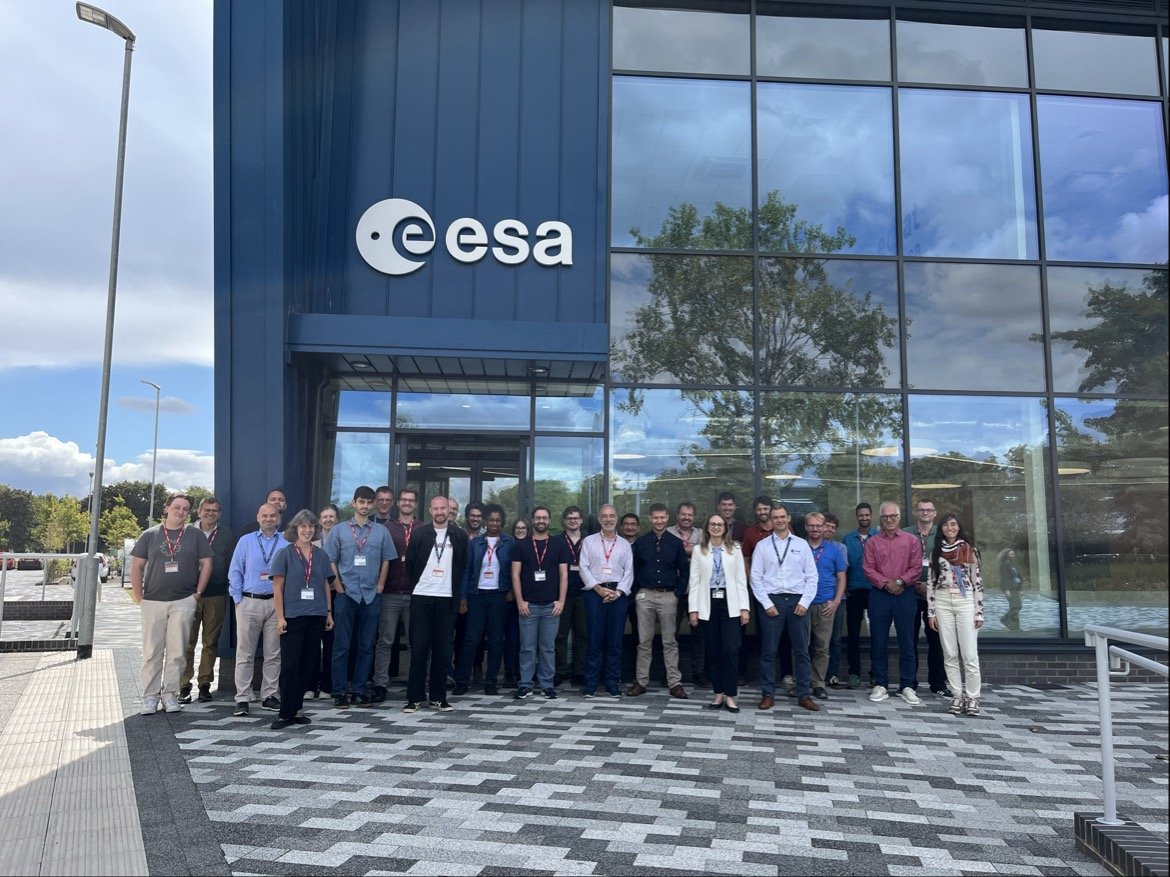Wildfire monitoring and research took centre stage this week (21–22 July) at the European Space Agency’s ECSAT facility in Oxfordshire, where a community of world-leading experts gathered for a workshop focussed on fire processes and Earth observation techniques.
Fires are a powerful force in the Earth system - shaping ecosystems, cycling carbon, and influencing both air quality and climate. Earth observation satellites provide a global perspective and are a key tool for understanding changing fire patterns and their drivers.
Organised by ESA, the workshop helped to raise community-wide awareness of the latest fire-related Earth observation research, methods and to shape future directions for fire science in light of upcoming satellite missions. It also reinforces the importance of international collaboration in advancing fire science from space.

Key speakers included representatives from NASA, Brazil’s National Institute for Space Research (INPE), along with several research consortia contributing to ESA’s Climate Change Initiative and Carbon Science Cluster. Presentations progress in monitoring burned areas, detecting active fires, measuring fire radiative power, plumes detection,fire related emissions, and collecting reference measurements critical to satellite validation were shared.
ESA’s field campaignswere also featured in the agenda. Using aircraft, towers, and other tools these field experiments aim to test, develop new or validate existing satellite instruments. Recent campaigns for example have been validating the thermal imaging capability of the Copernicus Sentinel-3 to measure fire radiative power, an essential climate variable used to measure fire intensity.
Dr Matt Jones from the University of East Anglia in the UK and lead author of the annual State of the Wildfire report, provided an overview of the 2023–24fire season, with a look back at recent impacts of extreme fire events. He announced that the global burned area product FireCCIS311, develop within the ESA CCI and based on Sentinel-3 data will be included in the upcoming 2024/25 report for the first time. Initial result, according to Dr Jones, suggest that the product aligns well with existing datasets in estimating burned areas, anomalies, and emissions.
The workshop also explored the complementary roles of polar-orbiting and geostationary satellites in improving fire observation, with the aim of delivering faster and more accurate data for fire risk assessment, management, and climate modelling.
A notable highlight was a presentation by Guilherme Mataveli from the Brazilian National Institute for Space Research (INPE), who shared insights into fire and biomass monitoring efforts in South America.
ESA campaigns coordinator Dr Dirk Schuettemeyer commented that: “the workshop aimed to boost awareness around the latest observation techniques and scientific advances. It’s already proving valuable - we’ve identified how near-real-time fire tracking tools from the Sense4Fire project could support this summer’s campaign focused on greenhouse gas fluxes in the Brazilian rainforest.”
Dr Clément Albergel, who leads ESA’s actionable climate information programme, added that, “the meeting brought together the full chain - from sensors and science to solutions. It also showcased the breadth of fire-related activity across ESA’ Earth Observation programme in support of global and regional fire-monitoring capabilities and providing science-based insights to inform policy and reduce fire risks.”

